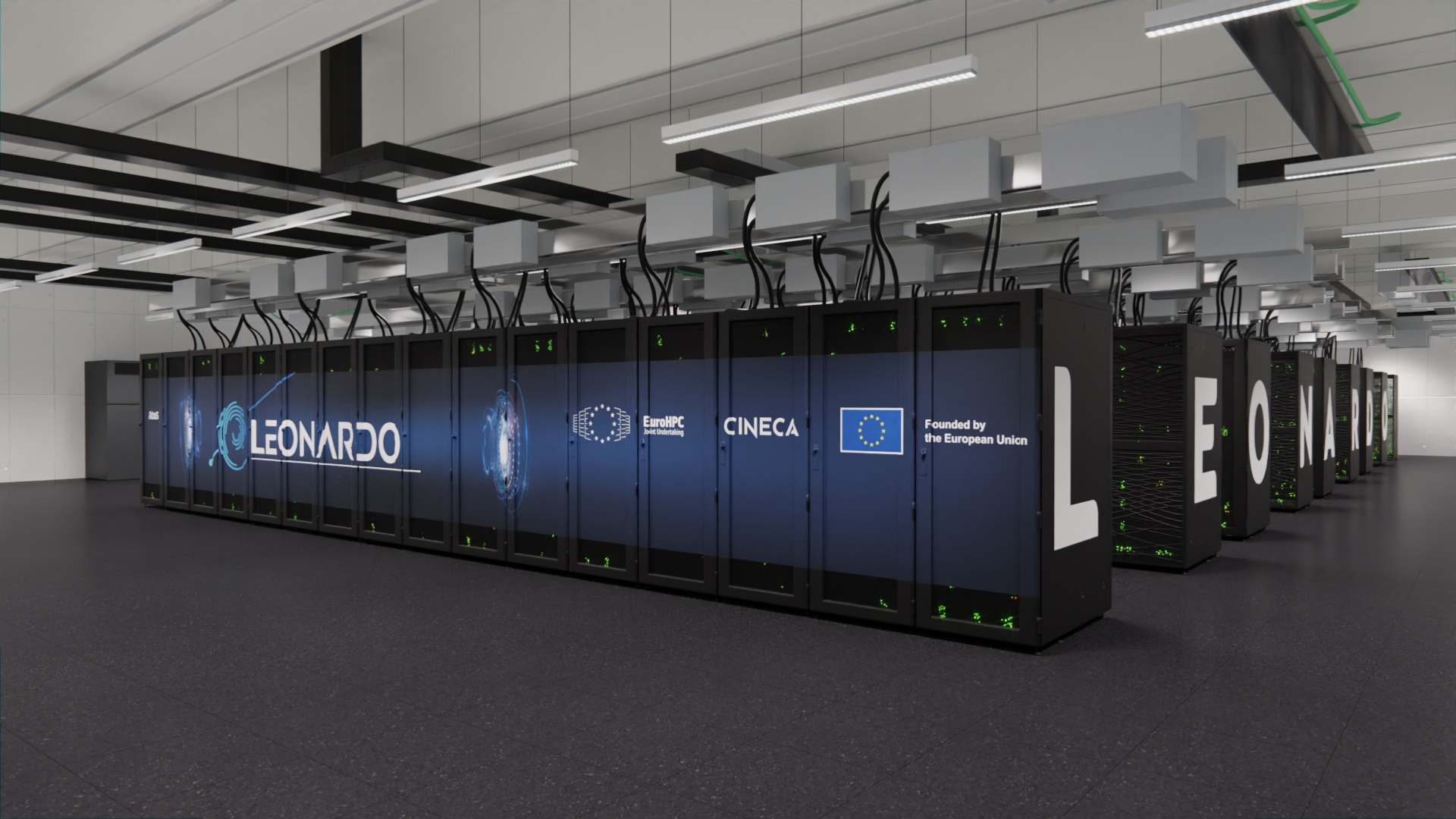...
| |||||||||||||||||||||||||||||||||||||||
|---|---|---|---|---|---|---|---|---|---|---|---|---|---|---|---|---|---|---|---|---|---|---|---|---|---|---|---|---|---|---|---|---|---|---|---|---|---|---|---|
Peak performance details
| Node Performance | ||
Theoretical | CPU (nominal/peak freq.) | 1680 Gflops |
| GPU | 75000 Gflops | |
| Total | 76680 GFlops | |
| Memory Bandwidth (nominal/peak freq.) | 24.4 GB/s | |
...
The account_name (or project) is important for batch executions. You need to indicate an account_no name to be accounted for in the scheduler, using the flag "-A"
...
With the "saldo -b" command you can list all the account_name associated with your username.
$ saldo -b (reports projects defined on LEONARDO Booster)
$ saldo --dcgp -b (reports projects defined on LEONARDO DCGP)
Please note that the accounting is in terms of consumed core hours, but it strongly depends also on the requested memory and local storage, and number of GPUs, please refer to the dedicated section.
...
In addition to the home directory $HOME, for each user is defined a scratch area $SCRATCH (or $CINECA_SCRATCH), a large disk for the storage of run time data and files.
An new user specific area $PUBLIC is defined on LEONARDO, useful for example to share installations with other users (it is indeed the default directory for SPACK sub-directories, see more details in the dedicated page).
A $WORK area is defined for each active project on the system, reserved to all the collaborators of the project. A corresponding $FAST area is defined for each active project on the scratch filesystem, on its subset of "fast" NVMe SSD flash drives. As for $WORK, the $FAST area is reserved to all the collaborators of the project. An extension of the default $WORK quota (1 TB) can be granted if justified and essential for the course of the project's activity, while the use of the $FAST is limited to 1 TB of space per project.
Total Dimension (TB) | Quota (GB) | Notes | |
|---|---|---|---|
| $HOME | 0.46 PiB | 50GB per user |
|
| $CINECA_SCRATCH | 41.4 40 PiB | no quota |
|
| $PUBLIC | 0.46 PiB | 50GB per user |
|
| $WORK | 10 30 PB | 1TB per project |
|
| $FAST | 3.5PB | 1TB per project |
|
- The automatic cleaning of the scratch area is NOT active yet, but it will soon be enforced.
...
It is also available a temporary storage area local to nodes on login and compute nodes (on the latter it is generated when the job starts and removed when it ends) and accessible via environment variable $TMPDIR. This area is:
- on the local SSD disks on login nodes (14 TB of capacity), mounted as /scratch_local (TMPDIR=/scratch_local). This is a shared area with no quota, remove all the files once they are not requested anymore. A cleaning procedure will be enforced in case of improper use of the area.
- on the local SSD disks on the serial node (lrd_all_serial, 14TB of capacity), managed via the slurm job_container/tmpfs plugin. This plugin provides a job-specific, private temporary file system space, with private instances of /tmp and /dev/shm in the job's user space (TMPDIR=/tmp, visible via the command "df -h"), removed at the end of the serial job. You can request the resource via sbatch directive or srun option "--gres=tmpfs:XX" (for instance: --gres=tmpfs:200G), with a maximum of 1 TB for the serial jobs. If not explicitly requested, the /tmp has the default dimension of 10 GB.
- on the local SSD disks on DCGP nodes (3 TB of capacity). Like with the serial node, the local /tmp and /dev/shm areas are managed via plugin, which at the start of the jobs mounts private instances of /tmp and /dev/shm in the job's user space (TMPDIR=/tmp, visible via the command "df -h /tmp"), and unmounts them at the end of the job (all data will be lost). You can request the resource via sbatch directive or srun option "--gres=tmpfs:XX", with a maximum of all the available 3 TB for DCGP nodes. Like with the serial node, if not explicitly requested, the /tmp has the default dimension of 10 GB. Please note: for the DCGP jobs the requested amount of gres/tmpfs resource contributes to the consumed budget, changing the number of accounted equivalent core hours, see the dedicated section on the Accounting
- on RAM on the diskless booster nodes (with a fixed size of 10 GB, no increase is allowed, and the gres/tmpfs resource is disabled).
For a general discussion on the TMPDIR area, For more details please see the dedicated section of Data storage and FileSystems.
Since all the filesystems are based on Lustre, the usual unix command "quota" is not working. Use the local command cindata to query for disk usage and quota ("cindata -h" for help) that will be available soon.
...
:
$ cindataor the tool "cinQuota" available in the module cintools
$ cinQuotaFor more details about both these commands, please consult the section dedicated to how to monitor the occupancy.
Software environment
Module environment
...
Note: on LEONARDO you can find modules compiled to support GPUs and modules suitable only for CPUs. You can check the compiler in the full name of the module, where the version is specified (e.g. gromacs/2022.3--intel-oneapi-mpi--2021.10.0--oneapi–2023.2.0). Remind that modules compiled with gcc, nvhpc, cuda should be used only on the Booster partition, while modules compiled with intel oneapi are suitable for running on the DGCP partition. Please refer to the specific sections of the two partitons for more details on the available compilers: Booster Programming environment and DCGP Programming environment.Note also that since the DCGP partition is currently in the pre-production phase, changes in the Module environment may occur. Please read the UserGuide for updates.
Spack environment
In case you don't find a software you are interested in, you can install it by yourself.
In this case, on LEONARDO we offer the possibility to use the “spack” environment by loading the corresponding module. Please refer to the dedicated section in UG2.6: Production Environment
...
